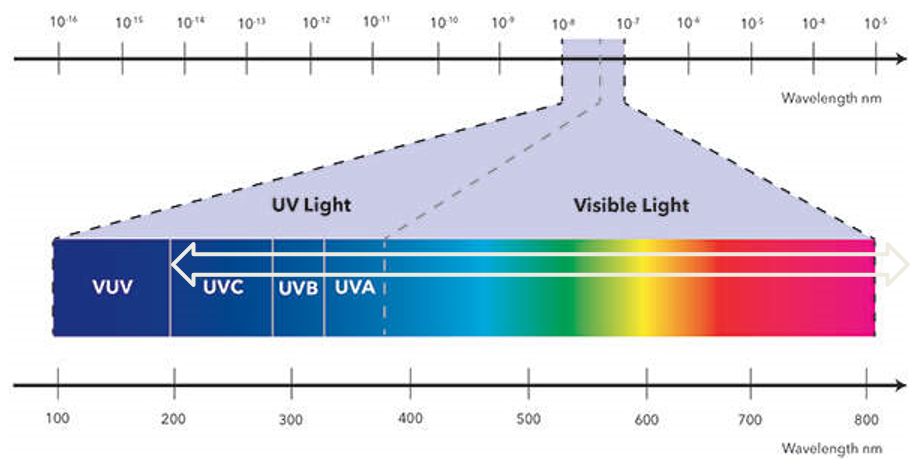Back-illuminated CMOS ultraviolet (UV) imaging cameras offer a cost-effective option for high-quality imaging in the 200-400nm range under moderately bright illumination conditions. The cameras shown here are based on two different image sensors:
- IMX487, from Sony’s Pregius S family
- Photonfocus UV
The Ultraviolet spectrum of shorter wavelengths than those of visible light. Imaging in the 200-400nm is useful for many specialized applications, including the detection of minute scratches and other defects that are undetectable in visible light. These cameras are well suited for applications such as sorting materials because they can image materials such as glass, plastic and PET which are transparent in the Visible region, but have different absorption rates in the UV region of the spectrum.
In addition to the 200-400nm UV region, these cameras have sensitivity in the Visible and NIR regions as well, which permits their use in broadband and multispectral imaging applications.












